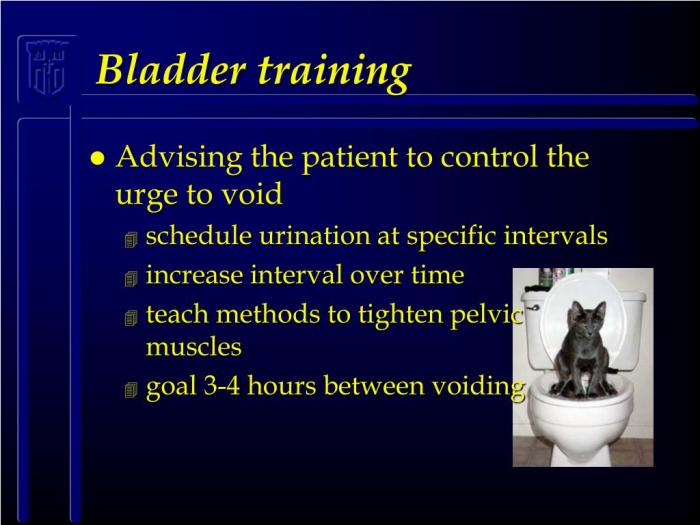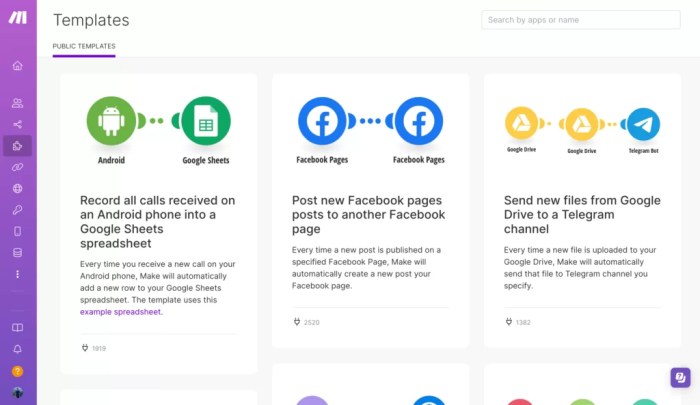Youre burnout you surely need these tips – Your burnout? You surely need these tips! This guide dives deep into the often-overlooked issue of burnout, offering practical strategies for recognizing its symptoms, understanding its causes, and implementing effective prevention and management techniques. We’ll explore everything from physical and emotional signs to actionable steps you can take to reclaim your well-being and build a sustainable work-life balance.
We’ll examine the common contributing factors, including workplace stressors and personal challenges. You’ll discover actionable steps to set healthy boundaries, prioritize tasks, and cultivate self-care routines. Ultimately, this comprehensive resource empowers you to identify and address the root causes of burnout and develop coping mechanisms to thrive in both your professional and personal life.
Recognizing Burnout Symptoms
Burnout is a state of emotional, physical, and mental exhaustion caused by prolonged or excessive stress. It’s not simply feeling tired; it’s a deeper, more pervasive sense of depletion that can significantly impact one’s well-being and productivity. Understanding the various symptoms is crucial for recognizing and addressing burnout before it spirals out of control.Burnout manifests in different ways for each individual, influenced by their unique circumstances, personality, and coping mechanisms.
Recognizing these symptoms, both subtle and overt, is the first step toward effective intervention and recovery. Early detection allows for proactive measures to be implemented, preventing further deterioration of physical and mental health.
Common Physical Symptoms of Burnout
Physical symptoms often accompany burnout, signaling a body under immense stress. These symptoms can range from mild discomfort to severe health concerns. Ignoring them can lead to more serious health problems down the road.
- Persistent headaches and muscle tension, often manifesting as neck pain or back pain.
- Difficulties sleeping or experiencing insomnia, which can affect energy levels and mood.
- Weakened immune system, making individuals more susceptible to illness and infections.
- Gastrointestinal problems such as stomach aches, indigestion, or diarrhea.
- Chronic fatigue and a persistent feeling of exhaustion, even after adequate rest.
Common Emotional Symptoms of Burnout
Emotional symptoms often accompany burnout, creating a sense of detachment, negativity, and hopelessness. These symptoms can significantly impact personal relationships and overall well-being.
- Irritability, frustration, and increased negativity towards others.
- Feelings of cynicism, detachment, and a loss of enthusiasm for previously enjoyed activities.
- Difficulty concentrating, experiencing a decline in cognitive function, and a decrease in mental clarity.
- Anxiety and depression, leading to feelings of hopelessness and helplessness.
- A persistent feeling of being overwhelmed and unable to cope with daily stressors.
Common Behavioral Symptoms of Burnout
Behavioral symptoms often reflect changes in lifestyle and interactions with others. These changes can impact productivity, relationships, and overall well-being.
Feeling burned out? You definitely need some productivity hacks. One key to combating burnout is understanding how to boost productivity by eliminating wasted time and effort. Learning how to streamline your workflow, as detailed in this helpful guide on how boost producitivity work eliminating waste , can dramatically improve your efficiency and reduce the stress that often leads to burnout.
These tips will help you reclaim your energy and focus, making you feel less overwhelmed and more in control.
- Withdrawal from social activities, isolating oneself from loved ones and friends.
- Decreased productivity at work or school, experiencing difficulties completing tasks efficiently.
- Procrastination, avoidance of responsibilities, and a lack of motivation to engage in daily activities.
- Substance abuse or increased reliance on unhealthy coping mechanisms, such as excessive alcohol consumption.
- Neglecting personal needs and priorities, including diet, sleep, and exercise.
Burnout Manifestation Across Lifestyles and Settings
Burnout can affect individuals across various backgrounds and lifestyles. The experience can differ depending on cultural norms, personal values, and support systems.
- Individuals in high-pressure professions, such as healthcare workers or executives, may experience burnout due to demanding workloads and tight deadlines.
- Parents, caregivers, and those juggling multiple roles may experience burnout from the constant demands of caregiving responsibilities.
- Students facing academic pressures, financial concerns, and social expectations may experience burnout.
Burnout in Professional and Personal Settings
Burnout can manifest in both professional and personal contexts, impacting relationships, productivity, and overall well-being.
- In professional settings, burnout can lead to decreased job performance, absenteeism, and increased errors.
- In personal settings, burnout can strain relationships, hinder effective communication, and lead to a decrease in personal fulfillment.
Symptom Analysis Table
This table provides a framework for understanding burnout symptoms, potential triggers, and coping strategies.
| Symptom | Potential Triggers | Coping Strategies | Examples |
|---|---|---|---|
| Emotional Exhaustion | Heavy workloads, unrealistic deadlines, interpersonal conflicts | Setting boundaries, prioritizing tasks, seeking support | Feeling drained, overwhelmed, hopeless |
| Depersonalization | Constant negativity, feeling disconnected from others | Practicing empathy, building strong relationships | Cynicism, detachment, indifference |
| Reduced Personal Accomplishment | Lack of control, feeling ineffective, low self-esteem | Focusing on strengths, celebrating achievements, seeking feedback | Feeling inadequate, unmotivated, unfulfilled |
| Physical Exhaustion | Stress, lack of sleep, poor diet | Prioritizing sleep, eating healthy, exercising | Headaches, muscle tension, fatigue |
Understanding the Causes of Burnout

Burnout isn’t a sudden affliction; it’s often the culmination of various factors building over time. Recognizing these contributing elements is crucial for prevention and recovery. Understanding the root causes allows individuals to proactively address the stressors and implement strategies to mitigate their impact. This exploration delves into the multifaceted nature of burnout, examining both workplace and personal contributors.Burnout emerges from a complex interplay of individual vulnerabilities, environmental pressures, and coping mechanisms.
Different individuals respond to similar situations differently, and the intensity of burnout depends on the cumulative effect of these factors. Pinpointing the sources of stress is the first step towards effective intervention and preventing further deterioration.
Workplace Stressors
Work-related pressures are frequently cited as major contributors to burnout. A demanding workload, excessive pressure to meet deadlines, and a lack of control over one’s tasks can significantly impact well-being. Insufficient resources, such as inadequate support staff or outdated technology, can also contribute to increased stress and ultimately, burnout. Ineffective communication or a lack of clarity in roles and responsibilities can lead to confusion and uncertainty, increasing stress levels.
Feeling burnt out? You’re not alone. Learning to navigate life’s challenges, especially when you’re facing burnout, often involves confronting some harsh realities. For example, understanding that sometimes, you can’t do everything, and accepting that you can’t always be the hero. Check out these 6 brutal truths the strongest people learn early in life to gain a better understanding of what’s truly essential, 6 brutal truths the strongest people learn early in life.
Once you acknowledge these realities, you can begin to implement strategies to manage your energy and protect your well-being, leading to more sustainable success and a healthier approach to dealing with burnout.
- Excessive workload: A common workplace stressor, characterized by an overwhelming volume of tasks and responsibilities that exceeds available time and resources. This can lead to feelings of inadequacy, frustration, and ultimately, burnout.
- Lack of control: Feeling powerless over one’s work schedule, tasks, or decision-making processes can be a significant source of stress. Limited autonomy and micromanagement can erode job satisfaction and contribute to burnout.
- Unrealistic expectations: Workplace environments that set unrealistic deadlines, performance targets, or goals can create undue pressure and lead to feelings of inadequacy and failure. These expectations often leave employees feeling constantly overwhelmed and unable to cope.
- Poor work-life balance: The inability to separate work from personal life can lead to chronic stress and burnout. Constant connectivity and pressure to respond to work-related emails or calls outside of designated work hours can disrupt personal well-being.
Personal Factors
Personal circumstances can also play a significant role in contributing to burnout. Underlying mental health conditions, such as anxiety or depression, can increase susceptibility to stress and exacerbate feelings of burnout. Lack of social support, financial pressures, or relationship difficulties can also add to the overall burden and lead to exhaustion.
- Unhealthy coping mechanisms: Negative coping strategies, such as substance abuse or avoidance, can exacerbate stress and prevent individuals from effectively managing their emotions and responsibilities, ultimately increasing the risk of burnout.
- Lack of social support: Limited support from family, friends, or colleagues can leave individuals feeling isolated and unsupported during challenging times, making them more susceptible to burnout.
- Financial concerns: Financial instability and the constant worry about money can significantly impact mental well-being, contributing to stress and potentially leading to burnout.
- Relationship issues: Difficult or strained relationships with family members, partners, or close friends can create ongoing stress and anxiety, potentially contributing to feelings of burnout.
Comparing and Contrasting Stressors
Different stressors impact individuals differently. While workplace pressures are a common trigger, personal factors can also act as potent catalysts. For example, an individual with pre-existing mental health conditions may experience a more pronounced effect from a demanding workload compared to someone without these conditions. Furthermore, the perceived control over the situation can significantly affect the level of stress and potential burnout.
Someone who feels they have no control over their work situation may experience a higher degree of burnout compared to someone who feels they have some influence over their work environment.
Impact of Stressors on Burnout Levels
| Causes | Effects | Prevention Strategies |
|---|---|---|
| Excessive workload, unrealistic deadlines | Increased stress, anxiety, exhaustion, decreased productivity, strained relationships | Prioritize tasks, delegate responsibilities, seek support, establish realistic deadlines, practice time management techniques |
| Lack of control, micromanagement | Reduced autonomy, decreased motivation, increased frustration, resentment, feelings of powerlessness | Communicate needs, seek opportunities for input, build trust with management, set clear boundaries, and seek support from colleagues |
| Unhealthy coping mechanisms | Increased stress, emotional dysregulation, exacerbation of existing issues, difficulty in problem-solving | Identify unhealthy coping mechanisms, develop healthier alternatives, seek professional guidance, build a support network |
| Financial concerns, relationship issues | Increased anxiety, worry, decreased focus, difficulty in relaxation | Seek financial assistance, address relationship concerns, develop healthy coping mechanisms, prioritize self-care |
Practical Tips for Preventing Burnout
Burnout isn’t a sign of weakness; it’s a cry for help from your body and mind. Recognizing the warning signs and actively implementing preventative measures are crucial for maintaining well-being and productivity in the long run. By understanding the triggers and adopting healthy habits, you can significantly reduce your risk of burnout.Effective prevention is about more than just reacting to symptoms; it’s about proactively building resilience and a sustainable work-life balance.
This involves understanding your own limitations, setting realistic expectations, and developing strategies to manage stress and avoid overexertion.
Setting Healthy Boundaries
Establishing clear boundaries between work and personal life is essential for preventing burnout. This involves recognizing and respecting your limits, both in terms of time and energy. A healthy boundary system allows you to disengage from work when you’re not actively working, preventing mental residue and allowing for rejuvenation. This also includes knowing when to say no to additional tasks or commitments that exceed your capacity.
Prioritizing Tasks and Managing Time
Effective time management is a cornerstone of preventing burnout. A well-organized schedule helps you feel in control and allows you to allocate sufficient time for tasks and personal activities. Prioritization skills allow you to focus on high-impact tasks first, maximizing efficiency and minimizing feelings of being overwhelmed. Tools like task lists, calendars, and project management software can be helpful in this process.
Improving Self-Care Routines
Self-care isn’t a luxury; it’s a necessity for sustained well-being. It encompasses a wide range of activities aimed at nourishing your physical, emotional, and mental health. Regular exercise, sufficient sleep, a balanced diet, mindfulness practices, and engaging in hobbies can all contribute significantly to preventing burnout. These routines provide the necessary energy and resilience to navigate stressful situations and maintain a healthy perspective.
Prevention Strategies Table
| Prevention Strategy | Example | Implementation Steps | Potential Benefits |
|---|---|---|---|
| Establish Clear Boundaries | Designate a specific workspace and stick to set work hours. Use email filters and auto-replies to manage communication outside of work hours. | Communicate your work hours and availability to colleagues. Unplug from work-related devices after work hours. | Reduces mental clutter, improves focus, and promotes a sense of detachment from work outside of designated work hours. |
| Prioritize Tasks | Use the Eisenhower Matrix (urgent/important) to categorize tasks. Focus on high-impact tasks first. | Break down large tasks into smaller, manageable steps. Set realistic deadlines and track progress. | Increases productivity, reduces stress from feeling overwhelmed, and fosters a sense of accomplishment. |
| Prioritize Self-Care | Schedule regular exercise, meditation, or mindfulness sessions. Ensure adequate sleep and maintain a balanced diet. | Create a daily or weekly self-care routine. Incorporate activities you enjoy. Seek support from friends or family if needed. | Boosts energy levels, improves mood, enhances resilience, and fosters a healthier perspective. |
| Time Management | Use a planner or calendar to schedule tasks and appointments. Break down large projects into smaller, more manageable tasks. | Set realistic deadlines and allocate appropriate time for each task. Learn to say no to extra commitments when needed. | Reduces stress associated with time constraints and improves overall productivity. |
Strategies for Managing Burnout
Burnout is a serious issue that affects individuals across various walks of life. It’s not simply feeling tired; it’s a state of emotional, physical, and mental exhaustion. Effective management strategies are crucial to preventing and recovering from burnout. These techniques focus on stress reduction, resilience building, support systems, and addressing underlying issues.Managing burnout requires a multifaceted approach that addresses the physical, mental, and emotional aspects of the condition.
This includes recognizing triggers, implementing coping mechanisms, and proactively seeking support. The strategies Artikeld below offer practical steps for regaining control and well-being.
Stress and Anxiety Management Techniques
Effective stress management is fundamental to preventing and overcoming burnout. Chronic stress is a major contributor to burnout, leading to physical and mental health issues. Developing healthy coping mechanisms is essential. These include techniques like deep breathing exercises, progressive muscle relaxation, and mindfulness meditation. Consistent practice can significantly reduce the impact of stress on the body and mind.
Building Resilience and Coping Mechanisms
Resilience is the ability to bounce back from adversity. Developing resilience is crucial in preventing burnout and coping with stressful situations. This involves cultivating a growth mindset, setting realistic goals, and developing problem-solving skills. Building a support network and maintaining healthy relationships can also bolster resilience.
Seeking Support and Connecting with Others
Social connection is vital for well-being. Isolation and loneliness can exacerbate feelings of burnout. Seeking support from friends, family, or support groups can provide a sense of belonging and validation. Professional counseling or therapy can also offer valuable support and guidance in navigating challenging situations. Open communication with loved ones is key to fostering a strong support system.
Identifying and Addressing Underlying Issues
Burnout often stems from underlying issues that require attention. These can include workplace stressors, relationship problems, or personal anxieties. Addressing these underlying issues can significantly reduce the risk of burnout. Identifying these issues requires self-reflection and potentially professional guidance. Strategies for addressing underlying issues may involve career counseling, relationship therapy, or personal development activities.
Coping Mechanism Effectiveness Table
| Coping Mechanism | Effectiveness | Application Examples |
|---|---|---|
| Mindfulness Meditation | High. Reduces stress hormones, improves focus, and fosters self-awareness. | Managing work-related stress, reducing anxiety before presentations, improving sleep quality. |
| Exercise | High. Releases endorphins, improves mood, and reduces stress. | Regular walks, yoga, or team sports can provide a healthy outlet for stress. |
| Time Management Techniques | High. Helps prioritize tasks, reduce feelings of overwhelm, and improve productivity. | Using to-do lists, breaking down large projects into smaller steps, and setting realistic deadlines. |
| Healthy Diet | Moderate. Provides essential nutrients to support physical and mental health. | Including fruits, vegetables, and lean protein in your diet. Avoiding excessive caffeine and alcohol. |
| Seeking Professional Help | High. Provides tailored support and strategies for managing underlying issues. | Counseling, therapy, or support groups can offer guidance and coping strategies. |
Building a Sustainable Work-Life Balance
Burnout isn’t just about feeling overwhelmed; it’s a multifaceted issue deeply rooted in the interplay between work and personal life. A crucial element in preventing and managing burnout is establishing a sustainable work-life balance. This balance isn’t about rigid division, but rather about creating a harmonious integration of professional responsibilities and personal well-being. This involves recognizing the importance of boundaries, implementing practical strategies, and fostering a positive work environment.A healthy work-life balance is not a luxury, but a necessity for overall well-being.
It reduces stress, improves focus, and enhances job satisfaction. When individuals feel supported and respected in their personal lives, they are better equipped to handle the demands of their work, leading to increased productivity and reduced risk of burnout. It’s a win-win scenario where both professional and personal aspects of life flourish.
Importance of Healthy Work-Life Boundaries
Establishing clear boundaries between work and personal time is fundamental to preventing burnout. This involves consciously separating professional commitments from personal responsibilities, creating dedicated time for relaxation, hobbies, and relationships. Unclear boundaries often lead to constant work-related thoughts and feelings of inadequacy, increasing stress and ultimately, burnout.
Actionable Strategies for Achieving a Sustainable Work-Life Balance
Implementing practical strategies is key to achieving a sustainable work-life balance. These strategies should be tailored to individual needs and preferences, but some general principles include prioritizing tasks, setting realistic deadlines, and utilizing time management techniques. Effective communication with colleagues and supervisors about workload expectations is also important. For example, learning to say “no” to additional tasks when your plate is already full is a vital skill.
Utilizing tools like calendars, to-do lists, and time-blocking techniques can also aid in achieving balance.
Elements for Fostering a Positive Work Environment
A positive work environment plays a significant role in supporting a healthy work-life balance. Factors such as supportive management, opportunities for growth, and a culture of respect and recognition contribute significantly. Teamwork and collaboration also contribute to a positive work environment, creating a sense of community and shared responsibility. Clear communication channels, fair workloads, and regular feedback contribute significantly to employee well-being and satisfaction.
Impact of a Healthy Work-Life Balance on Overall Well-being
A healthy work-life balance positively impacts overall well-being. It leads to reduced stress, improved mental health, and enhanced physical health. Individuals experiencing a healthy balance are often more focused, productive, and engaged in their work and personal lives. This positive feedback loop promotes resilience and fosters a greater sense of fulfillment and happiness.
Elements of a Sustainable Work-Life Balance
| Element | Description | Example |
|---|---|---|
| Clear Boundaries | Define distinct times for work and personal activities. | Schedule specific work hours and stick to them. Designate a workspace separate from your personal areas. |
| Prioritization | Focus on essential tasks and delegate when possible. | Create a daily to-do list, prioritizing urgent and important tasks. |
| Time Management | Efficiently allocate time for various activities. | Use time-blocking techniques to schedule specific tasks within designated time slots. |
| Effective Communication | Open communication with colleagues and supervisors. | Clearly communicate workload expectations and limitations. |
| Positive Work Environment | A supportive and respectful work atmosphere. | Seek opportunities for growth and development. |
Self-Care and Recovery Techniques: Youre Burnout You Surely Need These Tips
Burnout isn’t just a feeling; it’s a state of physical and mental exhaustion. Effective self-care is crucial for recovery and preventing future burnout episodes. Addressing your well-being holistically is paramount to regaining your vitality and resilience.Sustaining your well-being in the face of demanding situations requires proactive strategies. By integrating self-care practices into your daily routine, you can build resilience and navigate stressful periods with greater ease.
This involves prioritizing your needs and recognizing the importance of nurturing your physical, emotional, and mental health.
Effective Self-Care Practices
Self-care encompasses a wide range of activities that promote physical, emotional, and mental well-being. These practices are not merely luxuries; they are essential components of a healthy and balanced lifestyle. Effective self-care is key to combating the symptoms of burnout and fostering a sense of overall well-being.
Prioritizing Personal Well-being in Demanding Situations
Prioritizing personal well-being is vital during demanding periods. It’s about consciously making time for activities that replenish your energy and reduce stress. Recognizing the signs of burnout and taking proactive steps to address them is a critical component of effective self-care.
Feeling burnt out? You definitely need some helpful tips. One crucial step in overcoming burnout is accepting yourself – flaws and all. When you begin accepting yourself, incredible things happen, like increased self-compassion and a boost in your overall well-being. Check out this article for more on that: when you begin accept yourself these 10 amazing things will happen.
Embracing self-acceptance, as this article explains, is a powerful tool in your journey toward feeling less stressed and more in control. So, if you’re battling burnout, remember these helpful tips for a healthier path.
Relaxation and Rejuvenation Activities
Engaging in activities that promote relaxation and rejuvenation is essential for combating burnout. These activities can vary greatly depending on individual preferences and needs, but they all aim to restore a sense of calm and well-being. Consistent participation in such activities can contribute significantly to a reduced risk of future burnout.
- Mindfulness and meditation practices can help quiet the mind and reduce stress.
- Engaging in hobbies and creative pursuits can provide a sense of accomplishment and joy.
- Spending time in nature can promote relaxation and a sense of connection to something larger than oneself.
- Getting sufficient sleep is crucial for physical and mental recovery.
- Nourishing your body with healthy foods and staying hydrated are fundamental to well-being.
Seeking Professional Help
Recognizing when professional help is needed is a crucial aspect of self-care. Seeking support from a therapist or counselor can provide valuable guidance and strategies for managing stress and emotional challenges. This is especially true if burnout symptoms persist or significantly impact daily life. Seeking professional help is a sign of strength, not weakness. It demonstrates a commitment to personal well-being and a proactive approach to addressing challenges.
Self-Care Activities, Benefits, and Frequency Recommendations
Consistent self-care practices are key to building resilience. Regular engagement in these activities can have a significant positive impact on your overall well-being.
| Self-Care Activity | Benefits | Frequency Recommendation |
|---|---|---|
| Mindfulness Meditation | Reduces stress, improves focus, promotes emotional regulation | 15-30 minutes daily, or as needed |
| Engaging in Hobbies | Provides enjoyment, fosters creativity, reduces stress | At least 1-2 hours weekly |
| Spending Time in Nature | Reduces stress, promotes relaxation, boosts mood | At least 30 minutes 2-3 times a week |
| Adequate Sleep | Improves cognitive function, enhances mood, supports physical recovery | 7-9 hours nightly |
| Healthy Diet and Hydration | Supports physical and mental health, enhances energy levels | Consistent throughout the day |
Identifying and Addressing Underlying Issues
Burnout isn’t simply a reaction to overwhelming work demands; it often stems from deeper, underlying issues. Recognizing these underlying factors is crucial for effective prevention and management. These issues can manifest as personal struggles, systemic problems within the workplace, or a combination of both. Addressing these root causes is key to fostering long-term well-being and preventing future burnout episodes.Understanding these underlying issues allows for a more holistic approach to well-being, moving beyond simply managing symptoms to proactively addressing the core problems.
By acknowledging and addressing these factors, individuals can build resilience and develop strategies to navigate challenging situations more effectively.
Potential Underlying Issues Contributing to Burnout
Burnout often results from a complex interplay of personal and professional factors. Identifying these contributing factors is a crucial first step in developing effective coping mechanisms. Addressing these underlying issues can be a powerful tool in preventing future burnout.
- Unrealistic Expectations: Setting unattainable goals, either personally or professionally, can lead to chronic stress and feelings of inadequacy. This can manifest in the form of constantly striving for perfection or feeling pressured to meet impossible deadlines. Failing to meet these unrealistic standards can exacerbate feelings of guilt, frustration, and ultimately, burnout.
- Lack of Control: Feeling powerless over one’s work or personal life can be a significant source of stress. This can include a lack of autonomy in decision-making, limited opportunities for growth, or an inability to influence the direction of one’s work. This lack of control can lead to feelings of helplessness and frustration, potentially contributing to burnout.
- Poor Work-Life Balance: Inability to effectively separate work from personal life can lead to a constant state of stress and overwhelm. This includes excessive work hours, constant connectivity, and difficulty disconnecting after work. Maintaining a healthy boundary between these spheres is crucial for preventing burnout.
- Relationship Conflicts: Difficult relationships at home or in the workplace can significantly impact an individual’s well-being. This can range from family tensions to interpersonal conflicts with colleagues. These conflicts can lead to chronic stress and anxiety, increasing the risk of burnout.
Addressing Underlying Issues
Proactive steps to address these issues are essential for preventing and managing burnout.
- Setting Realistic Expectations: Breaking down large goals into smaller, achievable steps can reduce the pressure and increase feelings of accomplishment. Prioritizing tasks and focusing on progress, rather than perfection, is crucial for reducing stress and preventing burnout.
- Seeking Opportunities for Control: Identifying areas where more control can be exerted over one’s work or personal life can help reduce stress. This could involve negotiating responsibilities, requesting more autonomy in decision-making, or actively participating in shaping the direction of projects. Actively seeking opportunities for greater control is an important step in managing stress.
- Establishing Healthy Boundaries: Creating clear boundaries between work and personal life is vital for preventing burnout. This includes setting specific work hours, establishing a designated workspace, and actively disconnecting from work after hours. Consistent implementation of these boundaries is key for managing stress.
- Improving Relationship Dynamics: Actively working to improve relationships, whether at home or in the workplace, is crucial for fostering a supportive environment. This can involve open communication, active listening, and seeking conflict resolution strategies. Prioritizing positive relationships can significantly reduce stress and prevent burnout.
Seeking Professional Help
Seeking professional help is a sign of strength, not weakness. When underlying issues are significant or persistent, seeking support from a therapist or counselor can be invaluable. Professional guidance can provide valuable tools and strategies for coping with stress and addressing the root causes of burnout.
Identifying Personal and Professional Patterns
Identifying patterns in personal and professional life can highlight potential contributors to burnout. This involves examining recurring stressors, emotional responses, and work-related activities.
| Potential Issues | Indicators | Solutions |
|---|---|---|
| Unrealistic Expectations | Feeling constantly overwhelmed, experiencing perfectionism, difficulty setting boundaries | Break down tasks into smaller steps, prioritize tasks, focus on progress over perfection |
| Lack of Control | Feeling powerless, unable to influence decisions, limited opportunities for growth | Negotiate responsibilities, request more autonomy, seek opportunities for professional development |
| Poor Work-Life Balance | Difficulty disconnecting from work, excessive work hours, neglecting personal needs | Set clear work boundaries, prioritize self-care, schedule time for relaxation and leisure |
| Relationship Conflicts | Frequent conflicts, strained relationships, feelings of isolation | Practice open communication, seek conflict resolution strategies, prioritize supportive relationships |
Examples of Effective Strategies
Burnout isn’t a death sentence; it’s a wake-up call. Understanding the triggers and implementing proactive strategies can significantly reduce your risk. This section dives into real-world examples, showcasing how individuals and organizations successfully navigate the path towards sustainable well-being.Effective burnout prevention isn’t a one-size-fits-all approach. It requires tailoring strategies to individual needs and circumstances. The key lies in recognizing patterns, identifying personal triggers, and consistently practicing self-care and healthy work habits.
Case Studies in Implementing Healthy Work Habits
Implementing healthy work habits is crucial in preventing burnout. These habits are not just about working less; they’re about working smarter and more effectively, leading to greater job satisfaction and reduced stress. This section explores case studies illustrating successful implementations.
- A software engineer, Sarah, noticed a recurring pattern of intense work pressure leading to burnout. She implemented a strict time management system, breaking down large tasks into smaller, manageable chunks. This allowed her to better prioritize and avoid feeling overwhelmed. She also incorporated regular breaks, including short walks and mindful exercises, throughout her workday. This resulted in improved focus, reduced stress, and a more positive work environment.
- A marketing manager, David, observed that his team was experiencing burnout due to constant, demanding deadlines. He introduced flexible work hours, allowing employees to adjust their schedules to accommodate personal commitments. He also implemented a project review process, encouraging team members to proactively discuss challenges and find solutions together. This fostered a supportive and collaborative work environment, reducing the pressure on individual team members and promoting shared responsibility.
Personal Stories Highlighting Proactive Self-Care
Self-care isn’t a luxury; it’s a necessity for long-term well-being. These personal accounts demonstrate the profound benefits of proactive self-care in preventing burnout.
-
“I used to feel like I was constantly running on empty. I’d push myself to the limit, neglecting my physical and mental health. It wasn’t until I started incorporating daily meditation and yoga into my routine that I began to truly understand the importance of self-care. These practices have been instrumental in managing stress and preventing burnout.”
-Emily, a freelance writer. -
“For years, I prioritized work over everything else. I completely neglected my social life and hobbies. It wasn’t until I started carving out time for activities I genuinely enjoyed – like painting and spending time in nature – that I realized how important these outlets were for my overall well-being. Now, I make sure to schedule these activities into my week, not as an afterthought, but as an essential part of my routine.”
-Michael, a project manager.
Examples of Successful Burnout Prevention Strategies in Organizations
Organizations can implement proactive strategies to support their employees and prevent burnout. These strategies should be integrated into the company culture to foster a supportive and healthy work environment.
- A tech company, “Innovate Solutions,” implemented a comprehensive wellness program for their employees. This included stress management workshops, access to mental health resources, and opportunities for team building and social interaction outside of work. The program demonstrably reduced employee burnout rates and improved overall job satisfaction.
- A consulting firm, “Strategic Partners,” recognized the importance of work-life balance. They introduced flexible work arrangements, such as remote work options and compressed workweeks, allowing employees to better manage their personal responsibilities. This resulted in increased employee retention and a more engaged workforce.
Illustrative Images for Understanding Burnout
Visual representations can powerfully convey the complex emotions and experiences associated with burnout. Images can act as a catalyst for empathy and understanding, helping us recognize the subtle shifts in well-being that precede and accompany burnout. They can also inspire action by highlighting the importance of self-care and healthy coping mechanisms.Images depicting burnout often utilize symbolic imagery and specific color palettes to communicate the emotional state and situational context.
The use of color, composition, and character design can all contribute to a deeper understanding of the various stages and impacts of burnout.
Visual Depictions of Burnout Stages
Visual representations of burnout can effectively portray the emotional and psychological shifts experienced by individuals. Images can depict the transition from initial stress to full-blown burnout. The visual elements can include facial expressions, body language, and the surrounding environment. For instance, an image showcasing a person hunched over a desk, with blurred or dim lighting, might represent the exhaustion and disengagement that often characterize the later stages of burnout.
Conversely, an image showing someone actively engaged in a calming activity, like gardening or spending time in nature, could signify the recovery phase.
Emotions and Situations Portrayed
Images can evoke a wide range of emotions, from anxiety and overwhelm to apathy and exhaustion. The visual portrayal of these emotions often complements the narrative of the burnout experience. For example, a character depicted with hollow eyes, a pale complexion, and a strained posture might visually communicate feelings of hopelessness and depletion. A person engaged in a hobby or a supportive interaction with a friend, conversely, could represent the emotional restoration and the importance of social support during recovery.
Images can also depict the specific situations contributing to burnout, such as an overly cluttered workspace or a crowded, stressful environment. This allows the viewer to connect the visual cues with the corresponding experiences.
Significance of Visual Representation
Visual representations of burnout can facilitate understanding by providing a tangible and relatable portrayal of the condition. The visual aspects help to contextualize the abstract concept of burnout. They can also make the topic more accessible to individuals who may not fully grasp the emotional toll of burnout. Images can break down complex ideas into digestible pieces, making the concept more memorable and easier to understand.
The use of visuals can spark empathy and understanding by allowing individuals to connect with the depicted experiences on a personal level.
Visual Characteristics and Composition, Youre burnout you surely need these tips
Visual characteristics like color palettes and lighting can play a significant role in communicating the emotional state of the subject. Muted tones and low-key lighting might represent feelings of depression and exhaustion, while bright, vibrant colors and clear lighting might suggest a state of well-being and recovery. The composition of the image, including the positioning of the subject and the background elements, can further emphasize the emotional and situational context.
For example, an image showing a person isolated from a supportive environment might suggest feelings of loneliness and disconnection. Conversely, an image featuring people interacting in a positive and supportive manner can depict the importance of social connection and recovery.
Ending Remarks

In conclusion, overcoming burnout requires a multifaceted approach. This guide provides a roadmap to understanding the symptoms, causes, and effective strategies for prevention and management. By implementing the practical tips and strategies presented, you can build resilience, establish a sustainable work-life balance, and prioritize self-care. Remember, prioritizing your well-being is not a luxury, but a necessity for long-term success and fulfillment.











